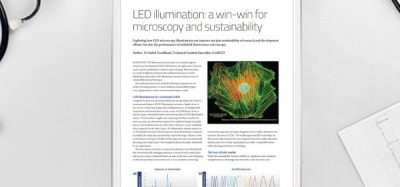Dostarlimab combination facilitates promising lung cancer survival
Posted: 8 December 2022 | Catherine Eckford (European Pharmaceutical Review) | No comments yet
The largest head-to-head trial of PD-1 inhibitors for non-squamous non-small cell lung cancer suggested dostarlimab with chemo aided survival.


Phase II trial results from the largest global head-to-head trial of programmed death receptor (PD-1) inhibitors in patients with metastatic non-squamous non-small cell lung cancer (NSCLC), showed a median progression-free survival (mPFS) of 8.8 months for patients treated with Jemperli (dostarlimab) plus chemotherapy versus 6.7 months for those given pembrolizumab and chemotherapy.
The GSK trial demonstrated an objective response rate (ORR) of 46 percent in patients treated with dostarlimab plus chemotherapy versus 37 percent for pembrolizumab with chemotherapy.
The findings from the primary analysis were presented at the 2022 European Society for Medical Oncology (ESMO) Immuno-Oncology Congress.
Hesham Abdullah, Senior Vice President, Global Head of Oncology Development at GSK commented: “The head-to-head data from the PERLA trial showed that dostarlimab combined with chemotherapy provided robust anti-tumour activity in patients with previously untreated NSCLC. The positive results from this trial highlight the potential for dostarlimab to be a single-agent and in combination with standards of care and novel therapies.”
PERLA Phase II study
PERLA Phase II clinical trial is a randomised, double-blind trial evaluating 243 non-squamous NSCLC patients who do not have a known sensitising epidermal growth factor receptor (EGFR), anaplastic lymphoma kinase, or receptor tyrosine kinase-1 mutation, V600E mutation of the BRAF gene or other genomic mutation for which an approved targeted therapy is available.
The primary endpoint as determined by Response Evaluation Criteria in Solid Tumours (RECIST) showed a 46 percent (n=56/121) ORR in the dostarlimab treatment arm versus 37 percent (n=45/122) in the pembrolizumab treatment arm. Difference in ORR was 9.32 percent; 80 percent Confidence Interval (CI) of 1.46 percent to 17.18 percent.
The key secondary endpoint of mPFS showed 8.8 months (95 percent CI: 6.7 to 10.4) in the dostarlimab treatment arm compared to 6.7 months (95 percent CI: 4.9 to 7.1) in the pembrolizumab treatment arm (HR 0.70 [95 percent CI: 0.50 to 0.98]).
Safety data of the non-squamous NSCLC clinical trial
Treatment-emergent adverse events (TEAEs) for dostarlimab in the Phase II trial were consistent with previous trials of similar regimens. The rate of TEAEs was 97 percent for both the dostarlimab and pembrolizumab treatments arms of the trial. The rate of Grade 3 or higher TEAEs was 59 percent in the dostarlimab treatment arm and 60 percent in the pembrolizumab treatment arm. The most common TEAEs were anaemia, asthenia, nausea, constipation, cough, dyspnoea, vomiting, decreased appetite, and neutropenia.
GSK is also assessing dostarlimab in earlier lines of treatment for endometrial cancer and in combination with other therapeutic agents for patients with advanced/metastatic cancers. The research includes positive headline results from the RUBY Phase III trial in patients with primary advanced or recurrent endometrial cancer, in addition to COSTAR Lung Phase III trial comparing cobolimab, an investigational anti-T-cell immunoglobulin and mucin domain (TIM)-3 targeting monoclonal antibody, plus dostarlimab plus docetaxel to dostarlimab plus docetaxel to docetaxel by itself in patients with advanced NSCLC who have progressed on prior anti-PD-(L)1 therapy and chemotherapy.
Feel free to share your comments on the positive results of this trial below!
Related topics
Anti-Cancer Therapeutics, Big Pharma, Biopharmaceuticals, Clinical Development, Clinical Trials, Drug Development, Drug Safety, Research & Development (R&D), Therapeutics








